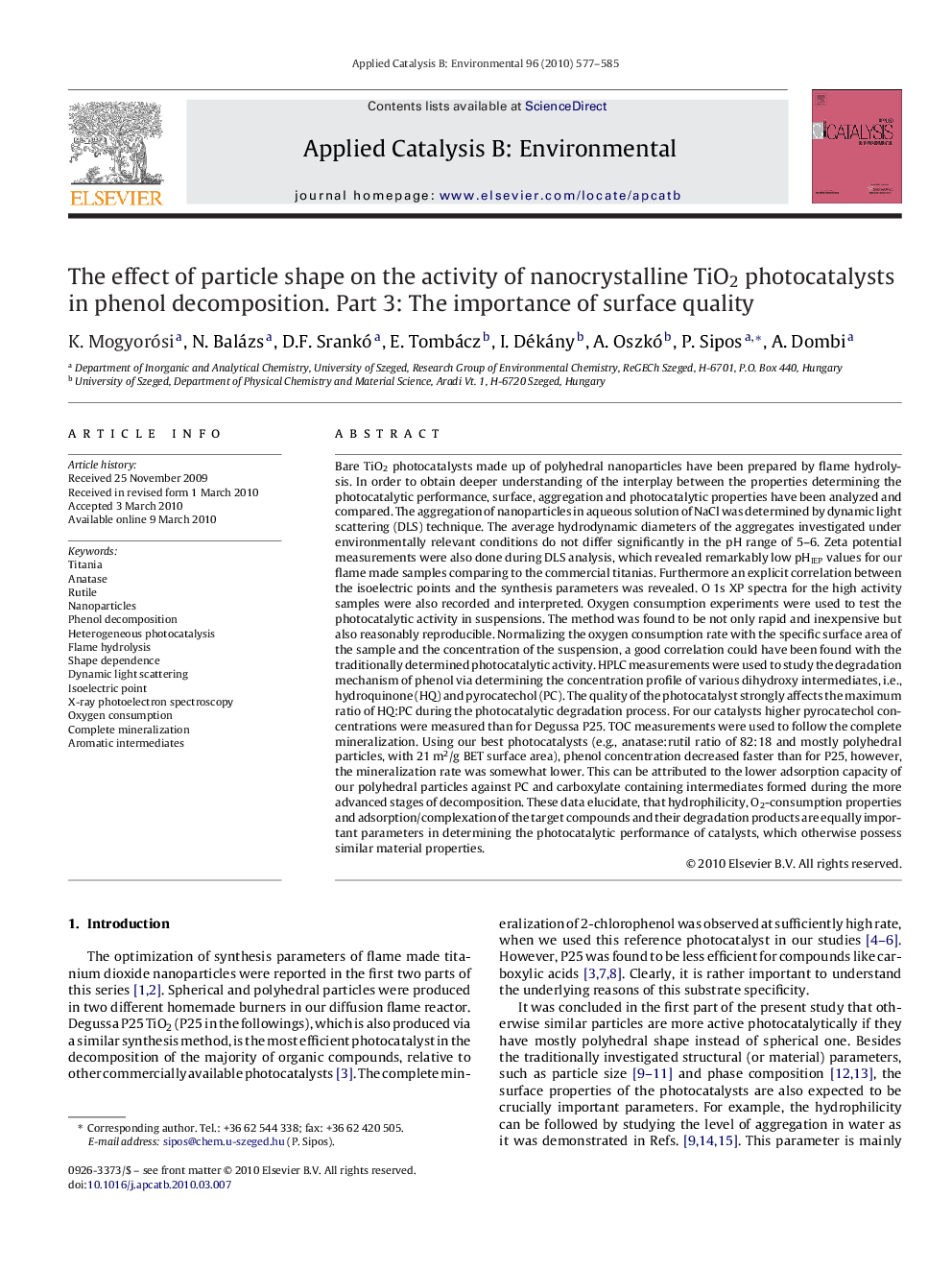| Article ID | Journal | Published Year | Pages | File Type |
|---|---|---|---|---|
| 47405 | Applied Catalysis B: Environmental | 2010 | 9 Pages |
Bare TiO2 photocatalysts made up of polyhedral nanoparticles have been prepared by flame hydrolysis. In order to obtain deeper understanding of the interplay between the properties determining the photocatalytic performance, surface, aggregation and photocatalytic properties have been analyzed and compared. The aggregation of nanoparticles in aqueous solution of NaCl was determined by dynamic light scattering (DLS) technique. The average hydrodynamic diameters of the aggregates investigated under environmentally relevant conditions do not differ significantly in the pH range of 5–6. Zeta potential measurements were also done during DLS analysis, which revealed remarkably low pHIEP values for our flame made samples comparing to the commercial titanias. Furthermore an explicit correlation between the isoelectric points and the synthesis parameters was revealed. O 1s XP spectra for the high activity samples were also recorded and interpreted. Oxygen consumption experiments were used to test the photocatalytic activity in suspensions. The method was found to be not only rapid and inexpensive but also reasonably reproducible. Normalizing the oxygen consumption rate with the specific surface area of the sample and the concentration of the suspension, a good correlation could have been found with the traditionally determined photocatalytic activity. HPLC measurements were used to study the degradation mechanism of phenol via determining the concentration profile of various dihydroxy intermediates, i.e., hydroquinone (HQ) and pyrocatechol (PC). The quality of the photocatalyst strongly affects the maximum ratio of HQ:PC during the photocatalytic degradation process. For our catalysts higher pyrocatechol concentrations were measured than for Degussa P25. TOC measurements were used to follow the complete mineralization. Using our best photocatalysts (e.g., anatase:rutil ratio of 82:18 and mostly polyhedral particles, with 21 m2/g BET surface area), phenol concentration decreased faster than for P25, however, the mineralization rate was somewhat lower. This can be attributed to the lower adsorption capacity of our polyhedral particles against PC and carboxylate containing intermediates formed during the more advanced stages of decomposition. These data elucidate, that hydrophilicity, O2-consumption properties and adsorption/complexation of the target compounds and their degradation products are equally important parameters in determining the photocatalytic performance of catalysts, which otherwise possess similar material properties.
